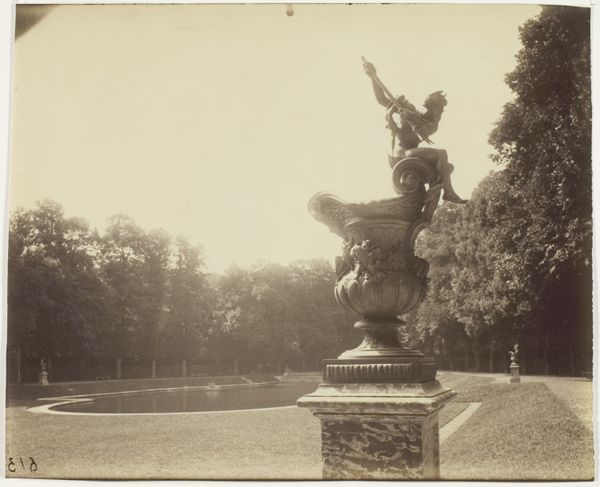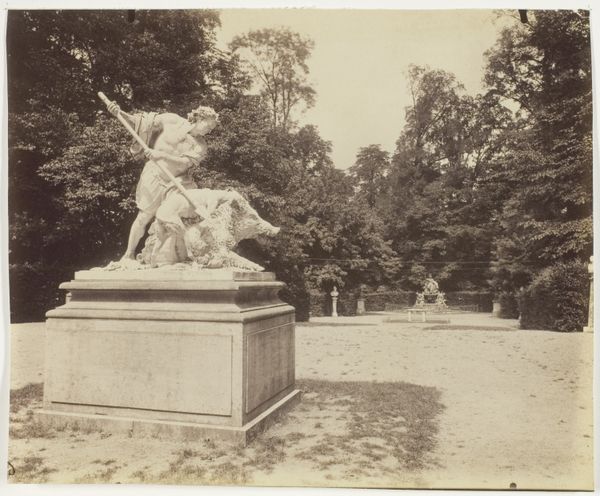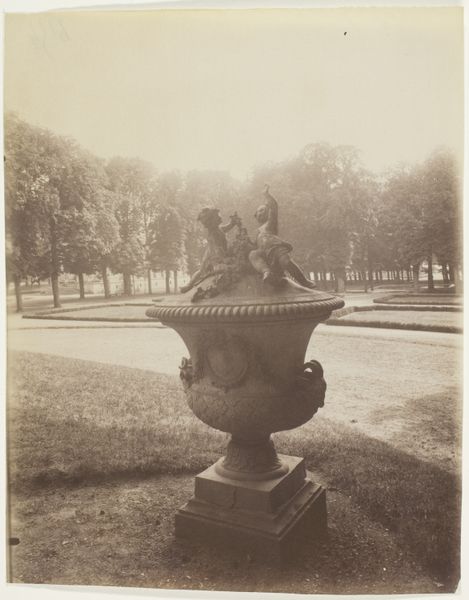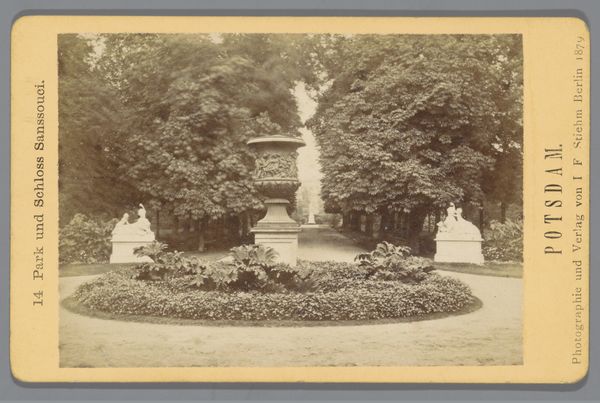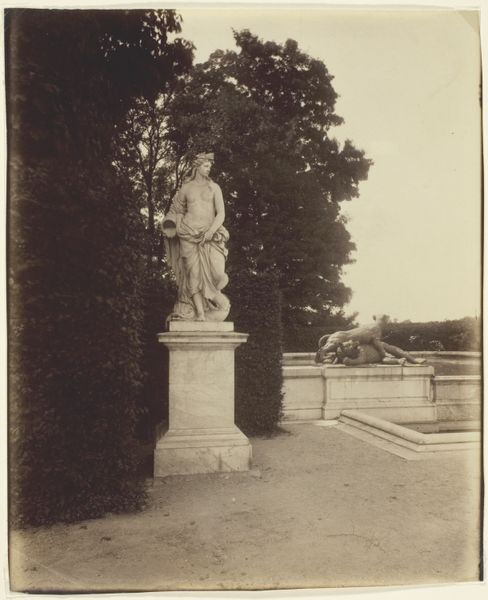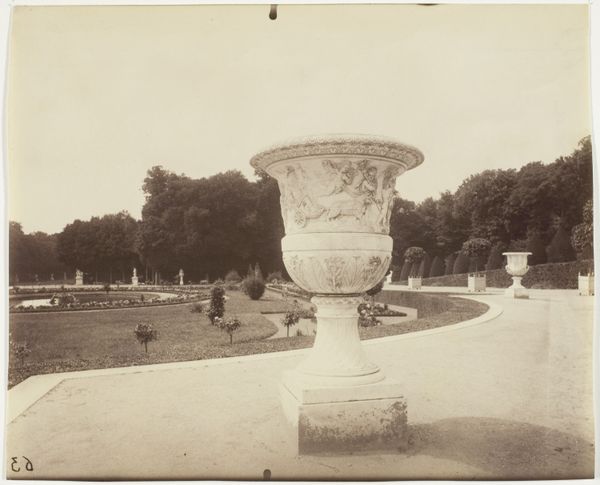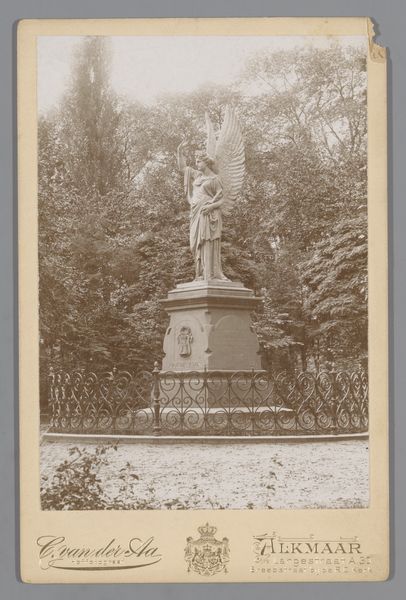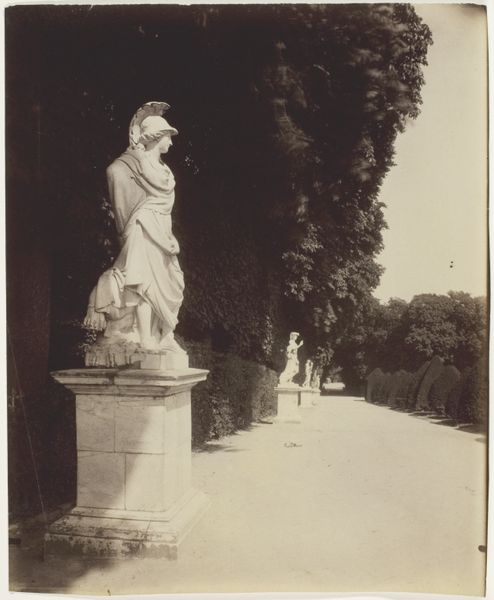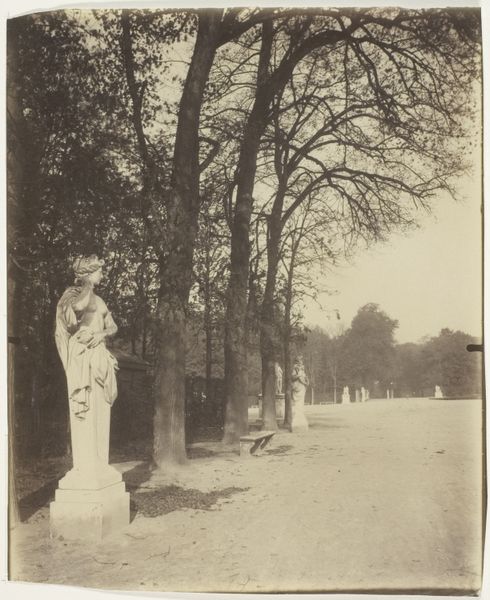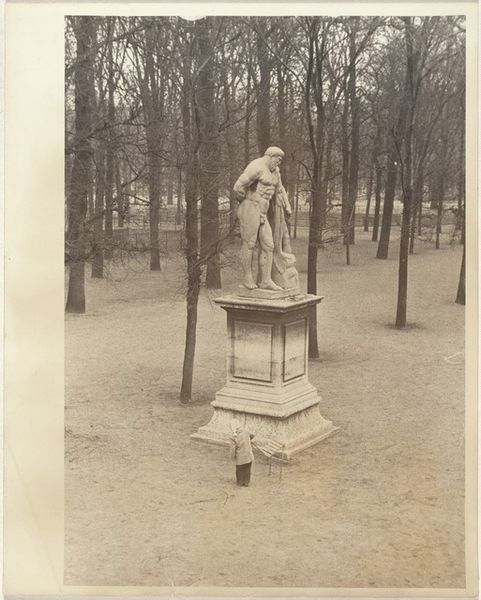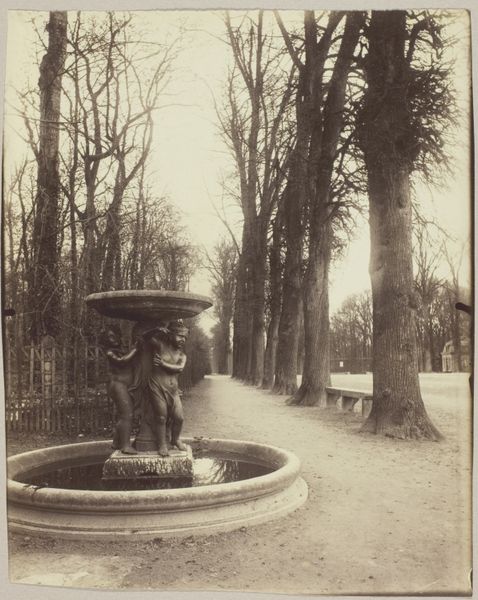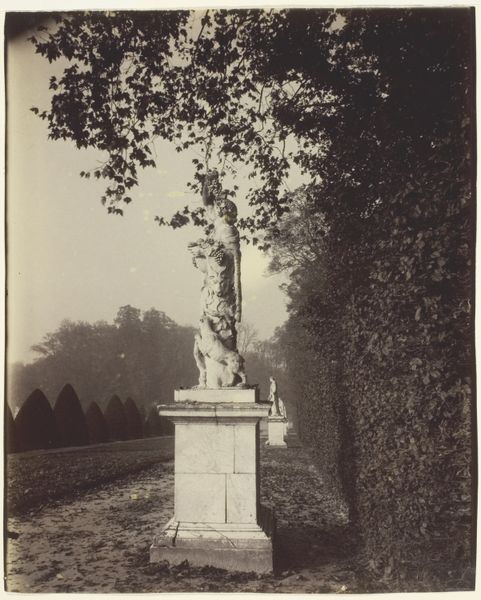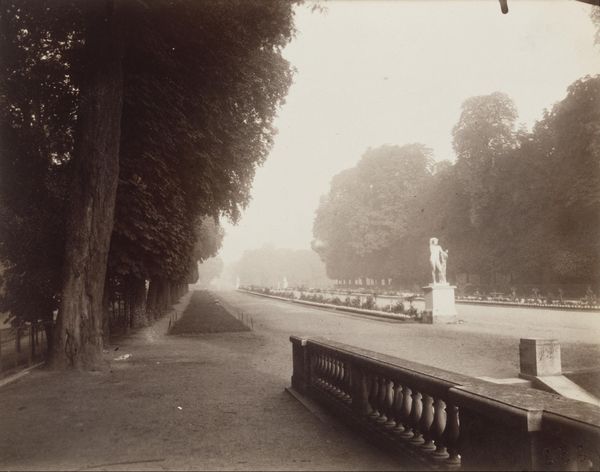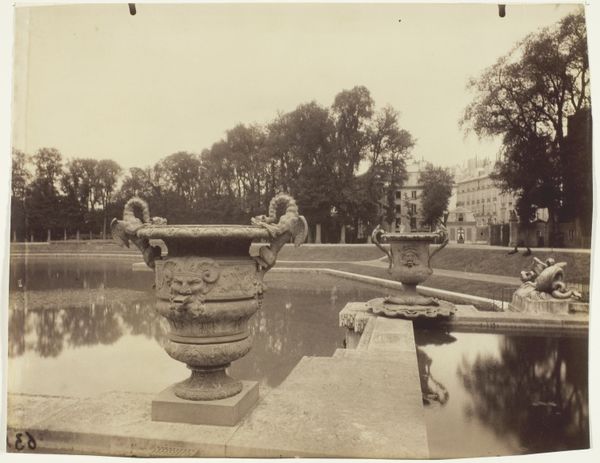
Versailles, Grand Trianon, (Vase en Plomb par Le Lorrain) 1901
0:00
0:00
Dimensions: 17.5 × 21.9 cm (image/paper)
Copyright: Public Domain
Curator: This photograph, taken by Eugène Atget in 1901, depicts "Versailles, Grand Trianon, (Vase en Plomb par Le Lorrain)," currently held at the Art Institute of Chicago. Editor: It feels stately, almost melancholy. The tones are muted, giving it an antique quality. The urn is quite prominent, but softened by the light and depth of field. It evokes a sense of historical weight. Curator: Indeed. Atget was fascinated by capturing the physical details of Old Paris and its environs before modernization dramatically altered them. He painstakingly documented these artifacts and architectural elements using his large-format camera. Consider the sheer weight and craft required to produce the lead vase by Le Lorrain that Atget chose as the subject here. Its existence is due to an industry dependent on specific materials, skills, and social hierarchies. Editor: That’s fascinating. Look at the figure atop the vase; does it depict winged victory or perhaps Fame, with the suggestion of a trumpet? Its inclusion certainly elevates the urn to a symbol of triumph, a constant visual reminder of royal or aristocratic power and its supposed glories. Curator: I agree, and it’s relevant to understand Versailles and the Grand Trianon were material expressions of Louis XIV's power and his vision. The formal gardens, of which this urn is a small component, involved incredible manipulation of the landscape and an intensive use of resources and labor. Atget presents this monument as part of a constructed landscape reflecting hierarchies of class and power. Editor: It’s cleverly placed to engage with that little islet with what looks like putti emerging from the water! One has the sense that the artist intentionally positions us between different iconic components and power structures, but in an intimate dialogue with Nature, always framing a specific reading. Curator: I see it less as dialogue than a complex interplay of human activity, social context, and the representation of idealized aesthetics, with Nature somewhat suppressed. However, by meticulously cataloging such objects, Atget documented the transformation of physical realities into idealized or historical visual signs. Editor: I think by engaging with the emotional pull of symbols such as Victory, Atget inadvertently highlights those complex negotiations as power adapts itself to prevailing modes of expression across time and social conditions. Curator: Perhaps you’re right. Either way, Atget's photographic treatment forces us to reexamine not just the artistry and labor embedded in the physical creation of such items, but also how power is perpetuated and visualized through objects and space. Editor: A worthy observation, especially given how time lends new depth of symbolism onto objects and our interpretation of them.
Comments
No comments
Be the first to comment and join the conversation on the ultimate creative platform.
